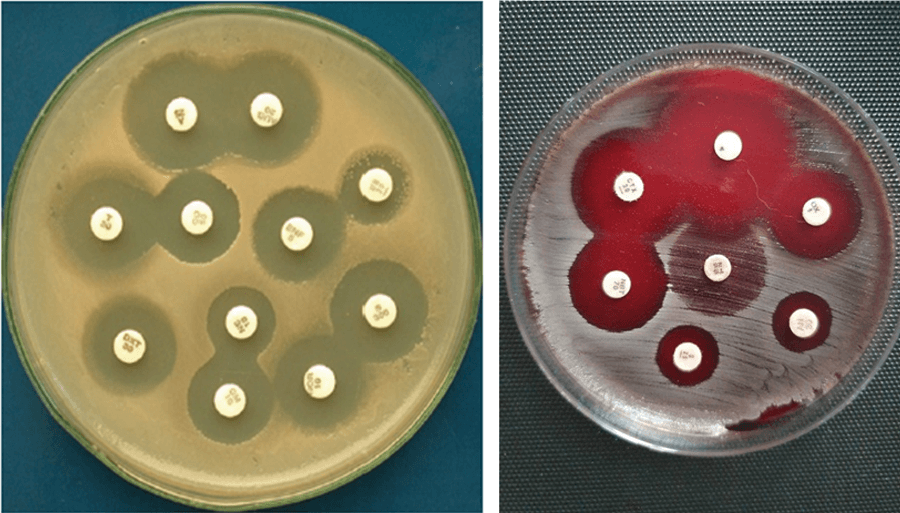The use of antibiotics in livestock farming as growth promoters has been one of the reasons for the emergence of bacterial resistance. European law now prohibits such practices.
Antimicrobial drugs may only be administered to animals with the agreement and under the control of a veterinarian, who, depending on the situation, individually determines the moment of treatment, the type of drug to be administered, its dose and the duration of therapy. In order to carry it out effectively, an antibiogram is recommended. This identifies which microorganism is the cause of the animal’s infection and its sensitivity to which group of antibiotics. On the basis of the result, the veterinarian can start targeted treatment, i.e. strictly directed against the microorganism in question.
One of the most popular microbiological tests for this is the diffusion-disc method (Kirby-Bauer), which boils down to placing a cotton disc containing an antibiotic on a medium with a specific bacterium. If bacterial growth is inhibited within 24 hours and characteristic circles appear on the substrate, the antibiotic can be used for therapy.

In the first instance, treatment with first-line or second-line antibiotics is used if previous drugs have proved ineffective. In medicine, there are also so-called critical antibiotics that are used to treat serious diseases and their use is only possible in rare cases where microbiological diagnosis rules out the efficacy of other antimicrobial agents. Their use in the treatment of both humans and animals should be significantly limited or excluded. Critical antibiotics include third and fourth generation cephalosporins, fluoroquinolones, colistin and macrolides.
In antibiotic therapy, a distinction is made between the concepts of empirical and targeted therapy. The former boils down to the selection of the antibiotic on the basis of the veterinarian’s previous clinical, anatomopathological and microbiological knowledge and experience of treating similar cases of disease and herd health care. The selection of an antibiotic here is done without laboratory-confirmed knowledge of what microorganism is causing the infection, generally on the basis of an assumption based on observation of the course of the infection. This therapy should only be used in emergencies or when a specific drug is required. Targeted treatment, on the other hand, is carried out on the basis of the antibiogram result. Knowing which bacterium caused the disease increases the effectiveness of treatment in the first phase of infection, but also prevents antibiotic resistance in the future. The administration of an antibiotic to animals should also take into account the withdrawal period. This is the time from the last dose of the drug until the concentration of the active substance in the tissues and products of animal origin is less than or equal to the maximum permitted residue limit (MRL). Compliance with the withdrawal period is a guarantee of food safety.
Each veterinary intervention, along with the medication prescribed for treatment, should be documented in the animal’s treatment record.
